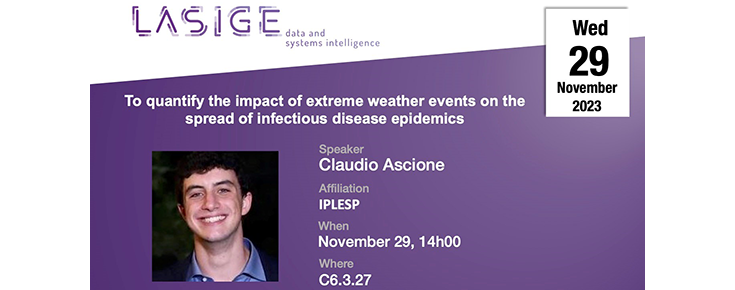
Por Claudio Ascione (Public Health at Sorbonne Université and the Pierre Louis Institute of Epidemiology and Public Health - IPLESP).
Climate change is increasing the frequency, intensity and range of extreme weather events. The influence these events have on the evolution of an infectious disease epidemic is manifold. On one side, they may directly facilitate the circulation of certain pathogens, namely water-borne (like cholera) and vector-borne pathogens (like Dengue). On the other side, extreme weather disrupts patterns of human mobility and population mixing. This in turn can drive the circulation of directly transmitted pathogens (like SARS-CoV-2 or influenza).
We focused on three recent extreme weather events: California wildfires of summer 2020, Hurricane Ian in 2022 and the Italy’s region of Emilia-Romagna’s floods in 2023. To track disruptions in human behavior, we used data from Meta (formerly Facebook) and Safe Graph. In my presentation, I will show the effect that these events had on mobility behaviours and the presence of common patterns among them. Secondly, we’ll move onto the consequences they could have on a concurrent respiratory disease epidemic.
Bio: Claudio Ascione a PhD student in Public Health at Sorbonne Université and the Pierre Louis Institute of Epidemiology and Public Health (IPLESP). Physicist by training, my main focus is now on infectious disease epidemiology. I study the effect that certain climatic events have on the spatial diffusion of certain communicable diseases. Specifically, my main project revolves around quantifying how extreme weather events impact behavioural patterns of the human population and the circulation of pathogens.



















